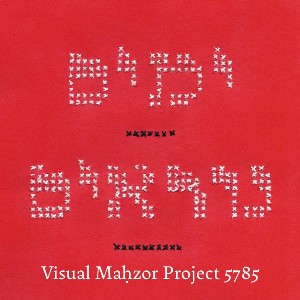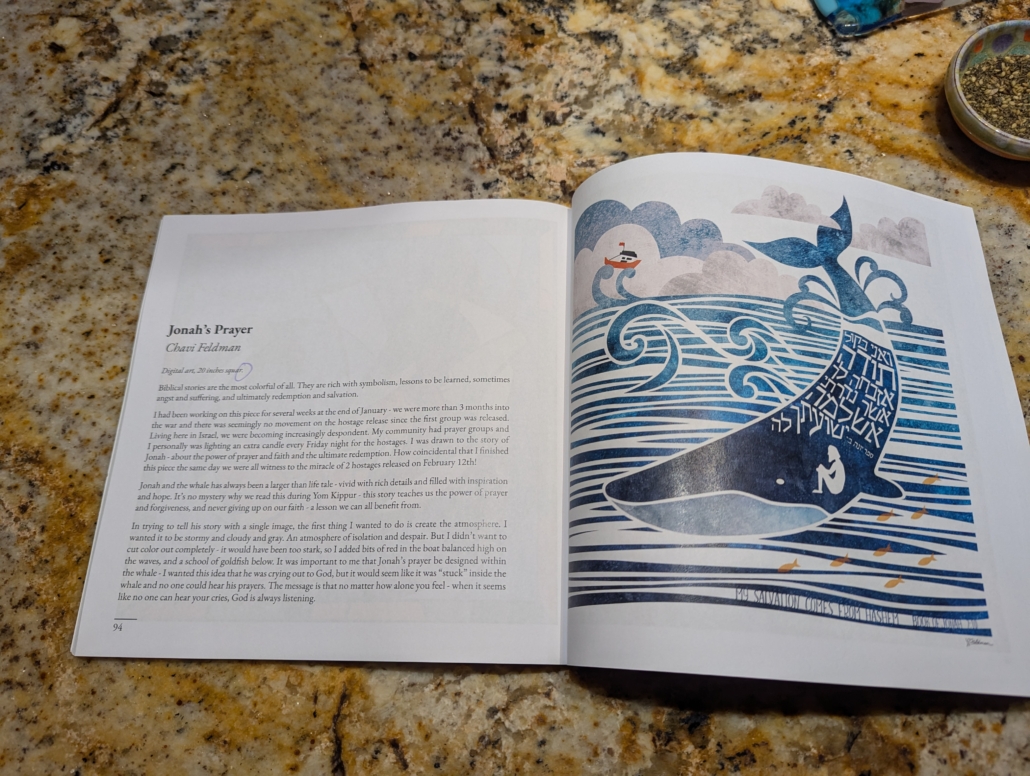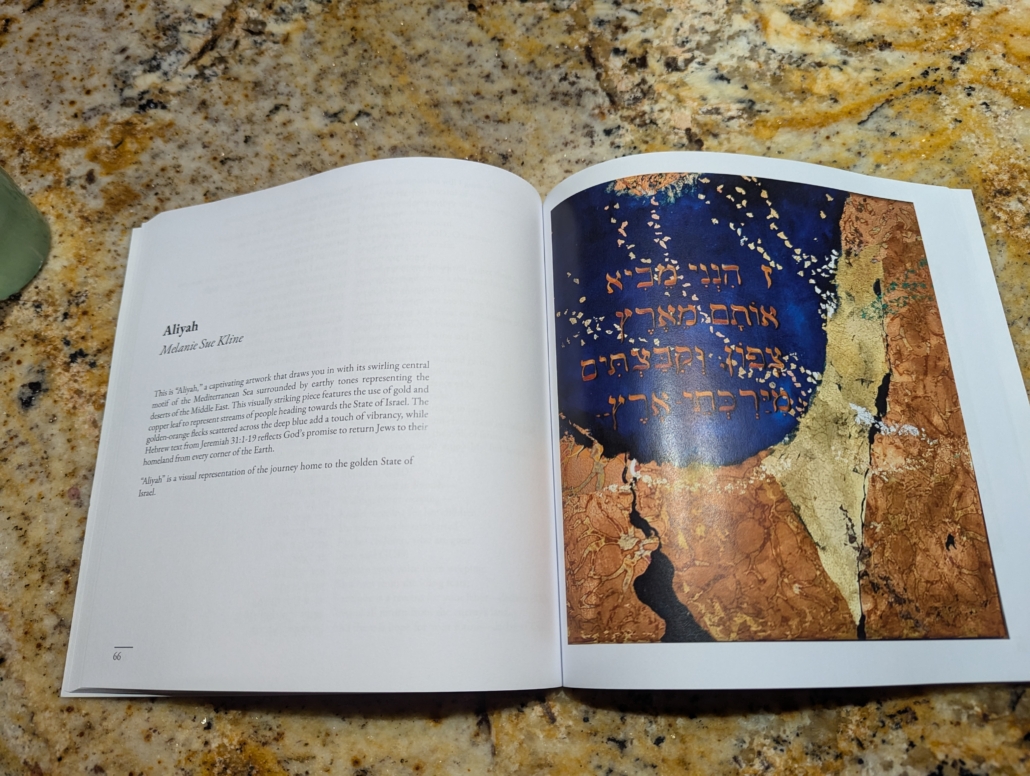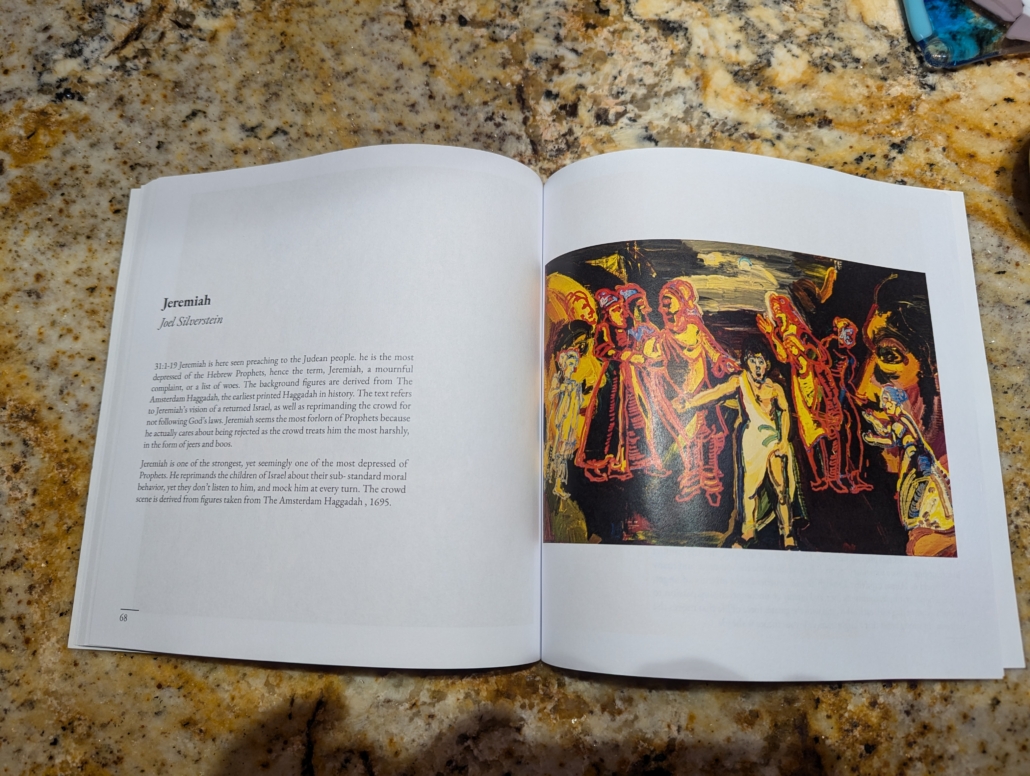The High Holidays are meant to be a pinnacle of the Jewish spiritual year. But what if the words in the high holiday prayerbook don’t move you? Or what if you’re not a synagogue-goer? Or what if you’re a visual thinker? We live in a visual society, and images speak their own language that can reach the heart in ways that text may not.
Enter Bayit’s Visual Mahzor project, a volume of art inspired by the texts of the Yamim Noraim / Days of Awe, edited by Justin Sakofs, featuring art that arises out of the Torah and Haftarah readings for Rosh Hashanah and Yom Kippur.
Introducing… Bayit’s Visual Mahzor
 Bayit’s Visual Mahzor can be used as a companion during services. We’ve selected an extraordinary range of artworks in many different media, each of which opens up the texts in a new way. In shul and not feeling connected with the service? Open the Visual Mahzor and let your mind and spirit ruminate on the artworks therein.
Bayit’s Visual Mahzor can be used as a companion during services. We’ve selected an extraordinary range of artworks in many different media, each of which opens up the texts in a new way. In shul and not feeling connected with the service? Open the Visual Mahzor and let your mind and spirit ruminate on the artworks therein.
The Visual Mahzor can also be a powerful source of meaning for those who may not attend high holiday services regularly or at all. It provides a doorway into the stories and themes of the high holidays no matter where you are: in synagogue, on a mountaintop, recuperating from illness, caring for a loved one, or any of the many places where we might be when this year’s holidays roll around.
(You can glimpse one of the artworks here — the cover features a cross-stitch by Adi Karelitz — and three two-page spreads are visible at the top of this page.)
How to Use This Book
The book can easily be carried to synagogue during the high holiday season. It can also be tucked into your backpack for a high holiday season hike, displayed as a coffee table book to show Jewish pride, used as a conversation starter in living rooms or coffee shops, given to the person who invites you to a break-the-fast or high holiday meal, or delved-into as a meditative focus during the high holiday season and beyond.
Artists Include
This volume includes work by artists from around the world, working in many different media, including teens participating in the Amen Institute, “where art is informed by Torah and Torah is formed in art.”
Artists include Gertie Angel, Shari Salzhauer Berkowitz, Marlene Burns, Josh Conescu, Chavi Feldman, Anna Fine Foer, Tzipora Gordon, Harriet R. Goren, Lena Rivkah Hunsicker, Pattie Lipman, Emily Marbach, Kerry Olitzky, Dianne Paley, Ayelet Raziel, Anne Belle Shapiro Cooper, Suri Seplowitz, Atara Siegel, Steve Silbert, Joel Silverstein, Rachel Simmons, Hillel Smith, Peter Stein, Eli Weingarten, Julie Wohl, and Yona Verwer.
Available Now for $36 USD!
The Visual Mahzor 5785 is dedicated in memory of Barry Miller, formerly of Sharon, MA, by his loving family and friends.
Errata:
We apologize for a misprint in the original printing. The piece of art by Yona Verwer entitled “Hebban Olla Vogalla” is meant to be titled “Book of Yona 8.” Here is its description:
Conversion requires ritual immersion in a pool of water to symbolize a change-of-soul. Featured in this painting are the whale, the conversion Bet Din, and the new Jewess. “Yona” serves as metaphor for immersion in the mikveh as part of the conversion process.
At Bayit we create and curate tools for “building Jewish.” If you want to support our work, including this volume, we welcome your donations!



